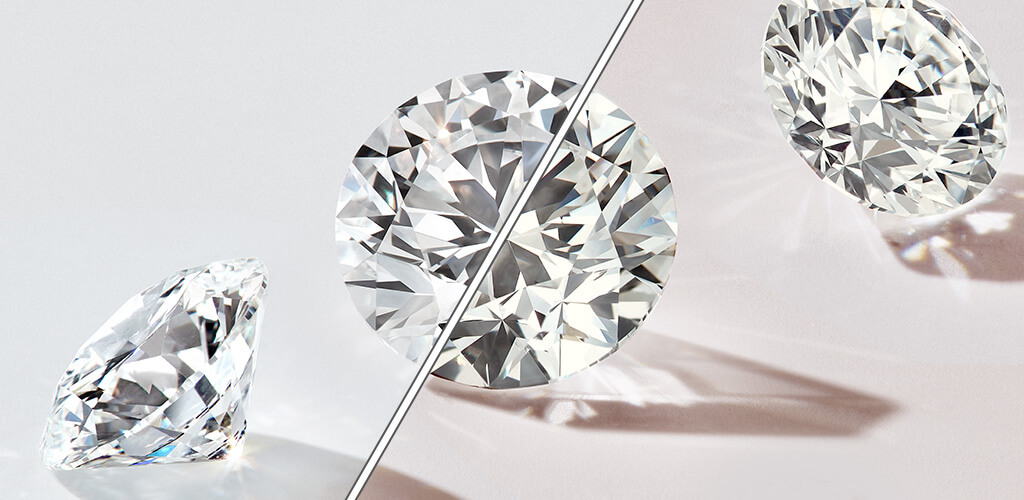
Debating between moissanite vs. diamonds? We’re breaking down everything there is to know about moissanite, natural diamonds, and lab grown diamonds to help you choose which center stone will suit your dream ring best!
We’ll walk you through all there is to know about moissanite, natural diamonds, and lab diamonds to help make your choice an easy one.
Moissanite has a different chemical makeup from natural and lab grown diamonds. While a diamond is pure carbon, moissanite is both silica and carbon. As a result, Moissanite sparkles differently, more even, and is slightly less hard than a diamond. However, it does look nearly identical to a diamond!
Moissanite, now produced entirely in labs, is a stunning diamond alternative. Grown with cutting-edge technology, it’s fully traceable and eliminates the need for mining.
Moissanite is gaining popularity as a diamond alternative, especially for engagement rings, where it’s commonly featured as the center stone.
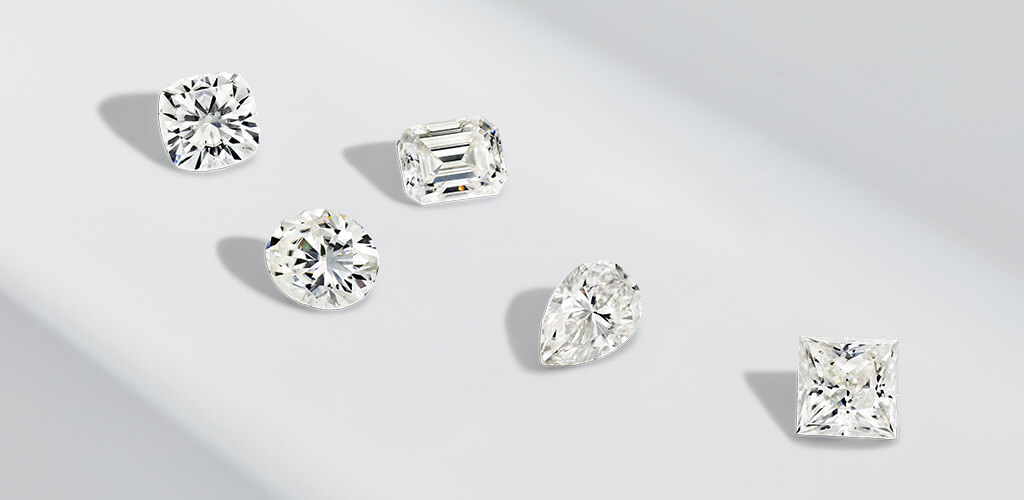
The short answer is no, moissanite is not a diamond. While it may look similar to a diamond, it is a different gemstone with its own unique properties.
Moissanite is made from silicon carbide, whereas diamonds are made of pure carbon. Moissanite is often chosen as a diamond alternative because of its brilliance, durability, and affordability, but it is a distinct gemstone with differences in appearance and composition.
Fun Fact: Moissanite has a higher refractive index than diamond, which means this gem produces more rainbow ‘fire’ than a diamond when light hits the stone’s surface.
A lab grown diamond, also known as a man-made diamond is a diamond that is formed in a lab instead of the earth’s crust (don’t you just love science?) Lab diamonds are chemically and optically identical to natural diamonds, the only difference is in the price tag! You’ll find that lab diamonds are three times less expensive than natural diamonds.
Remember, lab grown diamonds ARE real diamonds!
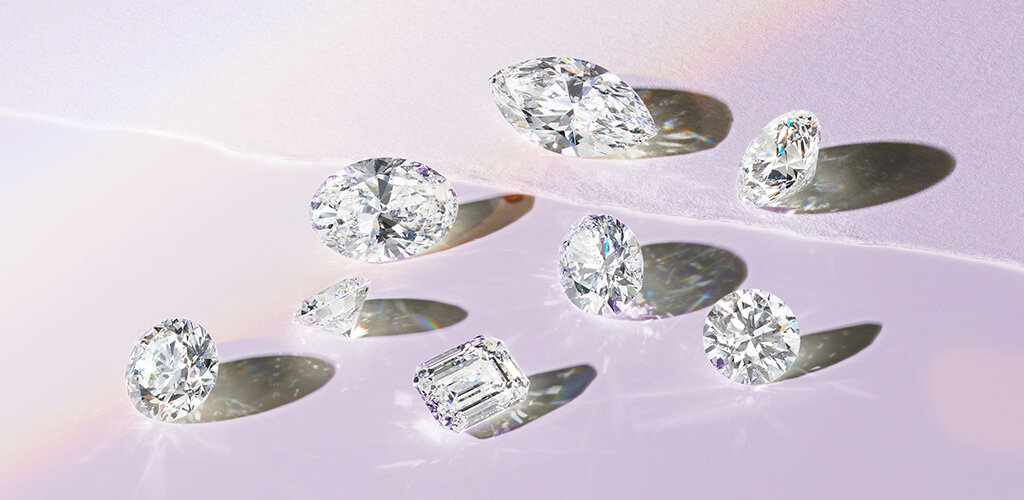
A natural diamond is a gemstone found deep in the earth’s crust, formed over millions of years, and mined all over the world. Also known as the April birthstone, diamonds are the rarest of all gemstones and the most sought-after center stone for engagement rings.
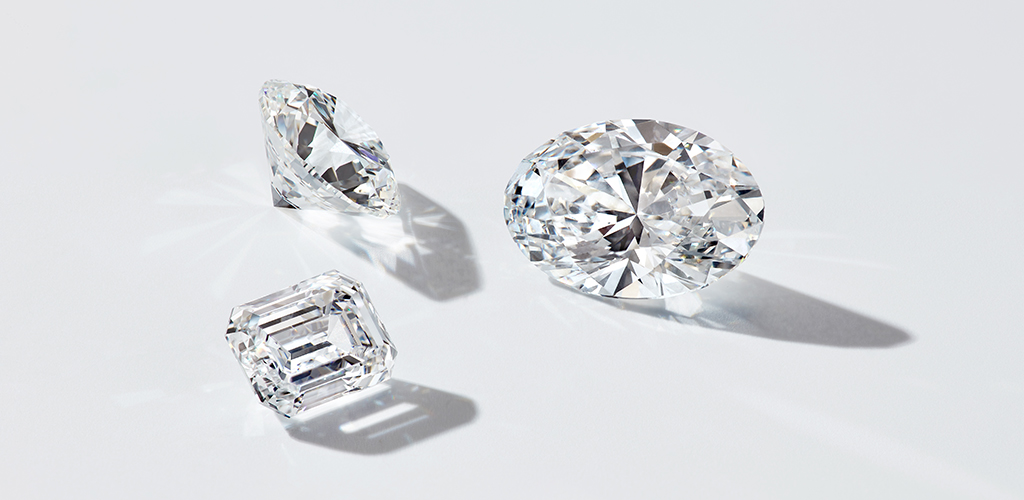
Never be afraid to ask the hard question when it comes to choosing the right gem for your engagement ring. Not all of us require a diamond, and some of us want one but would prefer an option that doesn’t break the bank. So, what questions should you be asking?
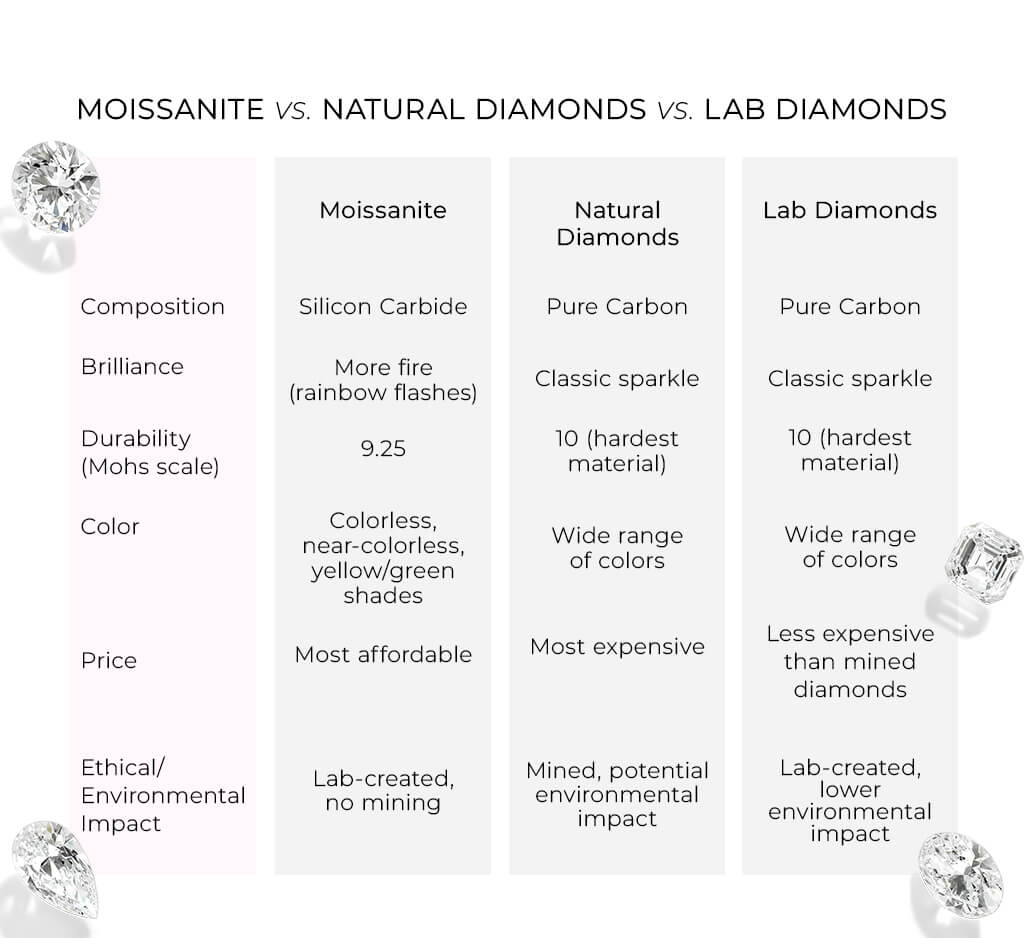
As you can see from the table above, moissanite and diamonds have their advantages, but what sets them apart from one another?
Moissanite comes in colorless, near-colorless, and yellow/green shades. This is perfect if you’re looking for a more traditional-looking center stone. On the other hand, natural and lab diamonds come in every color under the rainbow. You will have no trouble finding an affordable white diamond or a fancy color diamond.
On average, a lab grown diamond engagement ring will cost three times less than that of its natural diamond ring counterpart. But a diamond, regardless of its origin, may still prove to be too costly for a young couple or a couple with a tight budget.
That’s where moissanite certainly has an advantage. If you choose to go with a moissanite engagement ring, you’ll pay almost four times less than that of a lab created diamond ring and even less than that of a ring with a natural diamond center stone.
| Carat Size | Moissanite (USD) | Natural Diamond (USD) | Lab-Grown Diamond (USD) |
|---|---|---|---|
| 0.50 ct | $1,000 – $2,000 | $3,500 – $6,000 | $2,500 – $4,000 |
| 1.00 ct | $2,000 – $3,000 | $7,000 – $12,000 | $5,000 – $8,000 |
| 1.50 ct | $3,000 – $4,500 | $12,000 – $18,000 | $8,000 – $12,000 |
| 2.00 ct | $4,000 – $6,000 | $18,000 – $25,000 | $12,000 – $16,000 |
| 3.00 ct | $6,000 – $8,000 | $30,000 – $40,000 | $18,000 – $24,000 |
| 4.00 ct | $8,000 – $12,000 | $45,000 – $60,000 | $25,000 – $32,000 |
If you’re looking to maximize your budget and the size of your center stone, a moissanite ring may be the best option. However, if having a real diamond is important to you or your partner, a lab diamond is definitely the better choice and will still allow you to get a stunning gem of high quality.
Both lab diamonds and moissanite are made in safe lab environments with fair wages. There’s also no destructive mining involved. Natural diamonds are however earth-made. They’re mined from different continents around the globe.
A gemstone’s durability is measured using the Mohs hardness scale. FYI, diamonds are the hardest substance on earth, rating a 10 on the Mohs hardness scale!
Moissanite doesn’t do too badly either, coming in a close second at 9.25 on the scale. This means your moissanite ring will remain clear and unscratched. In fact, the only thing hard enough to scratch it would be a diamond.
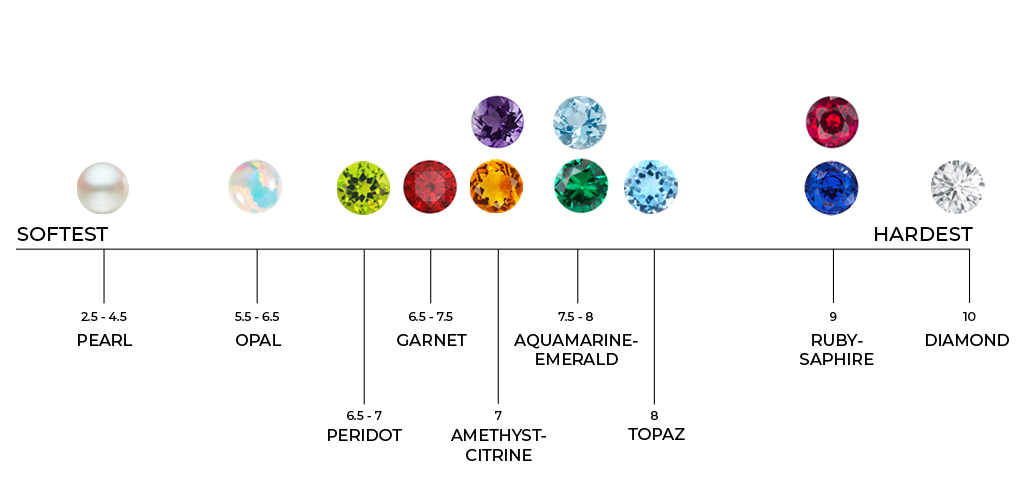
Yes. If you looked at moissanite engagement rings up close, you’d notice the distinctive sparkle. Not only does moissanite sparkle brighter than diamonds, but it also sparkles more colorfully, too.
Brilliance: Moissanite tends to sparkle more than diamonds, often giving off a rainbow-like flash, while diamonds produce a more subtle white sparkle.
Hardness: Diamonds are the hardest natural material, rated a 10 on the Mohs scale, while moissanite is slightly softer at 9.25. However, both are highly durable.
Double Refraction: Moissanite has double refraction, meaning when you look closely at the facets through the stone, they may appear doubled. Diamonds do not have this effect.
Price: Moissanite is generally more affordable than diamonds of similar size and appearance.
Thermal Conductivity: Diamonds are excellent conductors of heat, so a diamond tester can often distinguish between moissanite and diamonds based on heat conductivity.
Clarity and Color: Diamonds often have more noticeable inclusions or slight color variations, while moissanite is usually clearer and colorless, though both can vary.
These factors, along with professional gem testing tools, can help tell them apart.
Where you buy your engagement ring is a very important choice. Most, if not all, online jewelry retailers have a larger selection of engagement ring settings, diamonds, and diamond alternatives. They also have more advanced technological features and are usually much more affordable than store-bought engagement rings.
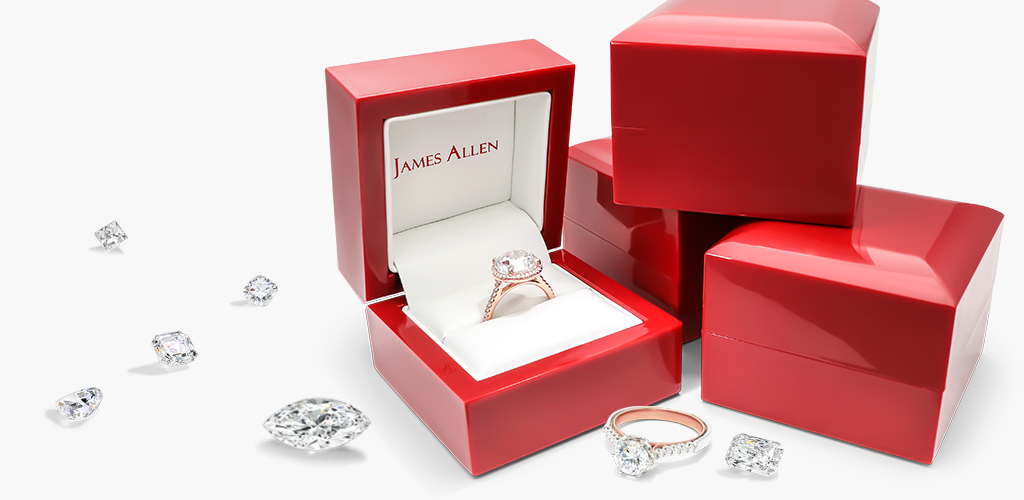
Diamonds and moissanite are both equally good alternatives to natural diamonds. If your main concern is a tight budget, but you still want a white stone that will last and sparkle forever while looking like a diamond, moissanite is your guy!
But if you’re a socially conscious shopper who still prefers a traditional diamond ring with an affordable price tag, lab grown diamonds are your best bet.
Yes, moissanite is a real and naturally occurring mineral. However, the moissanite used in jewelry is typically lab made due to its rarity in nature.
Moissanite can be a great alternative to traditional diamonds, offering exceptional brilliance and fire at a more affordable price point. Its durability and unique optical properties make it a popular choice for engagement rings and other jewelry.
Potential downsides include perceived value differences and the absence of natural rarity, which can affect resale or sentimental value for some individuals.
Yes, lab grown diamonds are considered real diamonds as they have the same chemical composition, physical properties, and optical characteristics as natural diamonds. The main distinction is their origin.